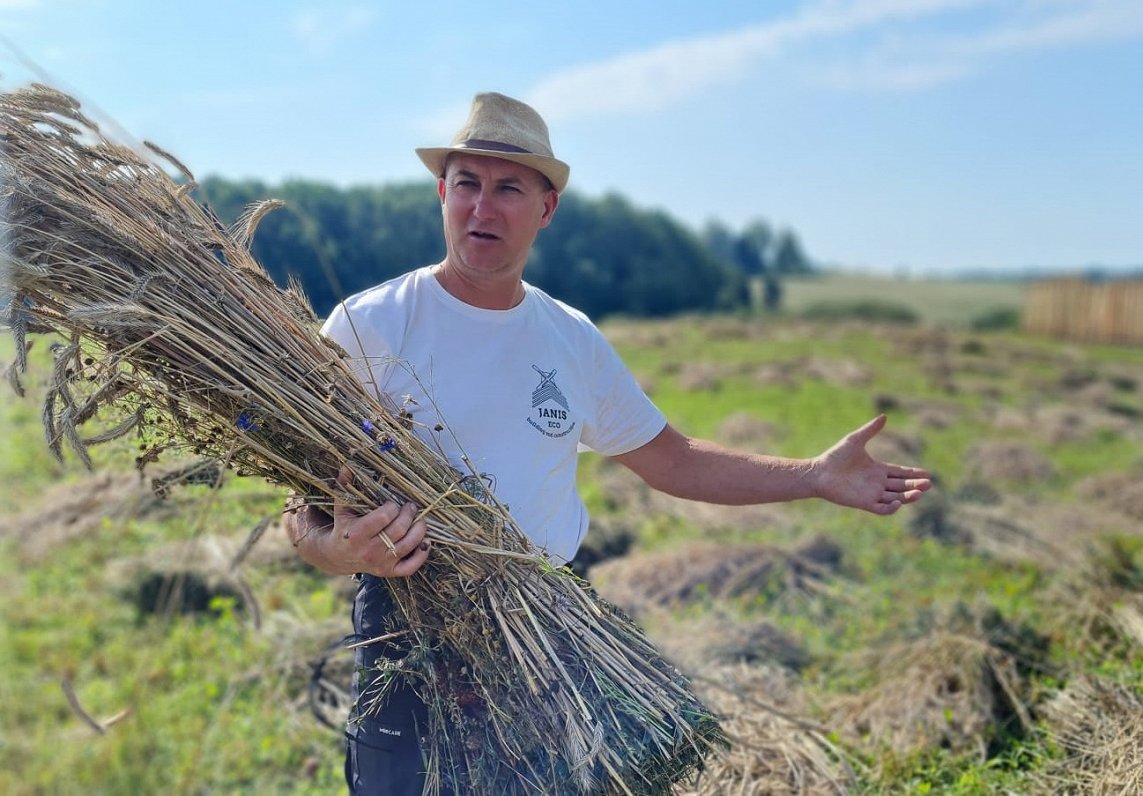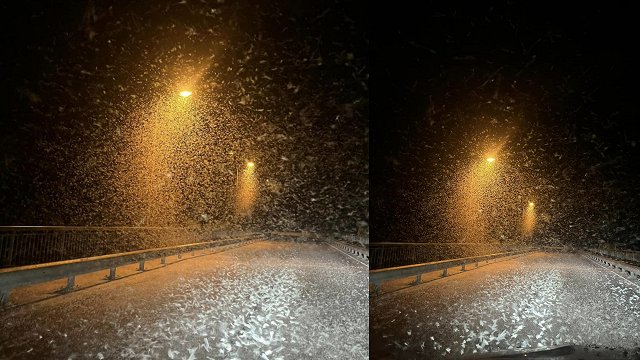Only his harvest is not grain, but straw, because Jānis Pūcītis is one of the rare masters of thatch roofs not only in Latvia, but also in Europe. While the materials for his the work are here in Latvia, most of the thatching is for the Scadinavian market, making his skills a perhaps unexpected export success story.
"The dried bunches [of stalks] are being collected here. Others are harvesting crops to get grains, I am harvesting the stalks," Pūcītis says.
Latvian Radio met Pūcītis in one of the fields where rye is grown organically. Jānis has an agreement with the owner of the rye that he can get straw, but the grain, of course, remains with the farmer.
"Here is one of the organic fields. So what's the difference? You can see that they [the stalks] are not limited in terms of length, they are long. So the fields are chosen where there is length. The longer the length, the better it is for roofing. Why also organic? Because these stalks are very strong and also resistant to breaking, that's why our ancestors only put organic, naturally grown straw on the roofs.
"These old varieties of rye are durable and give the roof a lifetime guarantee. Yes, and I'm grateful that there are farmers at the farm "Ķelmēni". You all already know the famous bread of Ķelmēni. This bread will be baked from this grain, because after cleaning, I return the grain back to the owners," says the businessman.
First, the crops are cut with a special harvester, which also binds the straw bundles.
In order for straw to be used for roofing, it is important to cut it properly, not to break or damage it. It is then dried in the field, and then collected. The next stage is in the hangar, where the straw bales are sorted. Currently, this material for roofs is in great demand in Denmark and Sweden. Jānis Pūcītis learned roofing skills in Sweden.
"Like many Latvians, fate dictated that I had to travel to other countries in search of work. I chose Sweden. I started working for an old craftsman who restored old buildings and structures, put on reed and straw roofs. We worked well together, but we encountered the problem that there is a catastrophic lack of material for thatched roofs. Then I remembered where I was born, that there are such farms as this that grow ecological, organic rye. They willingly agreed to cooperate. That's how I got the certainty that I should start production and produce straw bundles for roofs," Pūcītis continues.
Jānis Pūcītis, who is also a member of the International Thatching Society, says that currently more and more countries are thinking about ecology and these roofs are also becoming more popular.
"Thatch stands for 20-35 years. Then, when the roof is used up, it is simply removed and thrown into the compost, and it decomposes. In connection with international colleagues from Japan, the Japanese government is very much starting to invest and develop not reed roofs, which last longer, but exactly straw [roofs]. It is related to agriculture. For farmers to grow organic, ecological food, but for them to have additional income, then they can take it from this straw, and this is good for both builders and farmers," explains Pūcītis.
When it comes to thatched roofs, you may be wondering what about fire safety? Here, the master says, it is a myth that these roofs are fire hazards.
"I can say that chemical, plastic or modern materials burn even faster and pollute the environment with the gases they release. They are harmful, but these materials when they burn are natural. It is not so flammable. Well, you know, a bale of hay that is tightly compressed - try to light it. It will not burn, but smolder. But we are also working to improve this fire safety. We use fiberglass cloth, which can withstand 1,000 degrees. We put it underneath under reeds or straw. If the roof is on fire, then it is not allowed to enter the house, if it is burning from the house, then it is not allowed to enter the roof," says the master.
Basically, the straw bales made by Jānis are exported, but he would very much like this material to be used more in Latvia, thus preserving the skills of this trade.
"There are only two of us left in Europe. I am in Latvia, which produces straw bales, and one in Sweden and England produces straw bundles for roof ridges. There are still some thatchers England, but that profession is disappearing. I, with my thinking and operation, I want to revive it, popularize it and create it, so that these roofs will be there in the future as well," emphasizes Pūcītis.
At the moment, the collected straw bundles are still being cleaned, and the demand for them is high. All have been sold in advance.
"There are already orders for all these straw materials, they need to be cleaned and they will all go to Sweden. I also need to put up two roofs. The rest will go to my colleagues who also need to put up straw roofs," Pūcītis reveals.
But even in winter the master thatcher does not have time to rest – that is the time for cutting reeds from the frozen ice of Latvia's lakes.





























